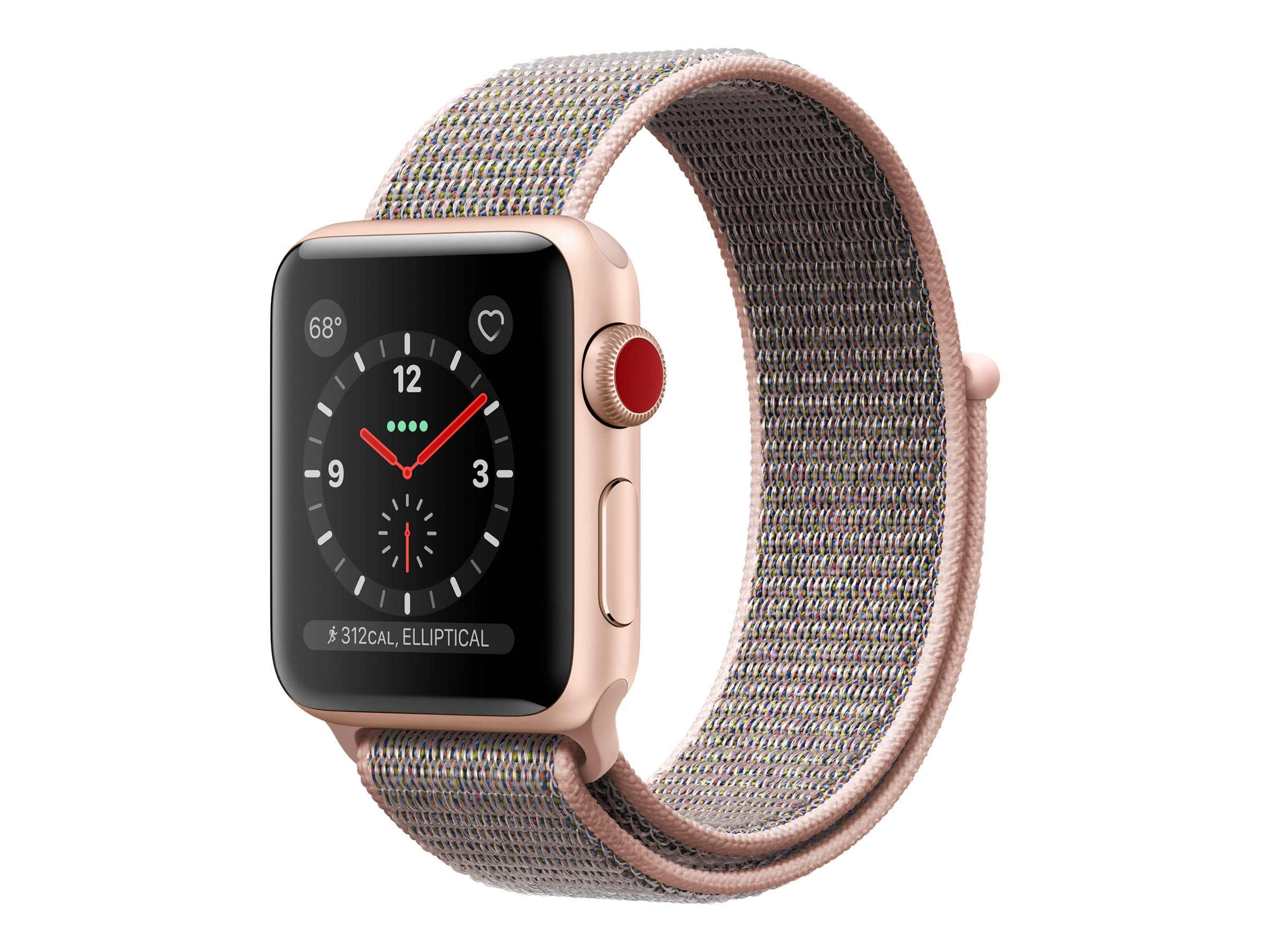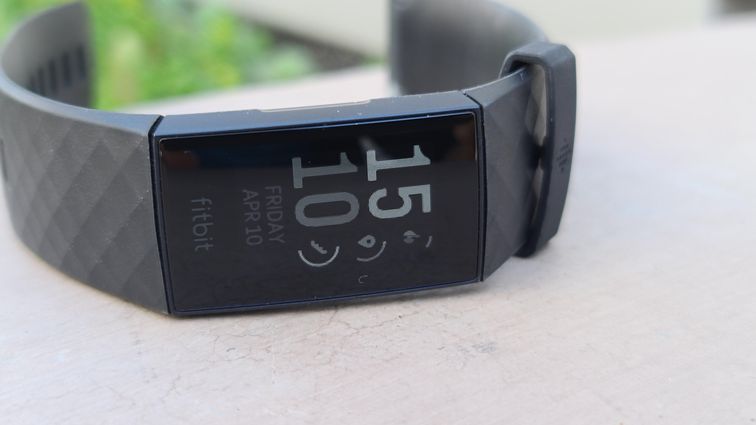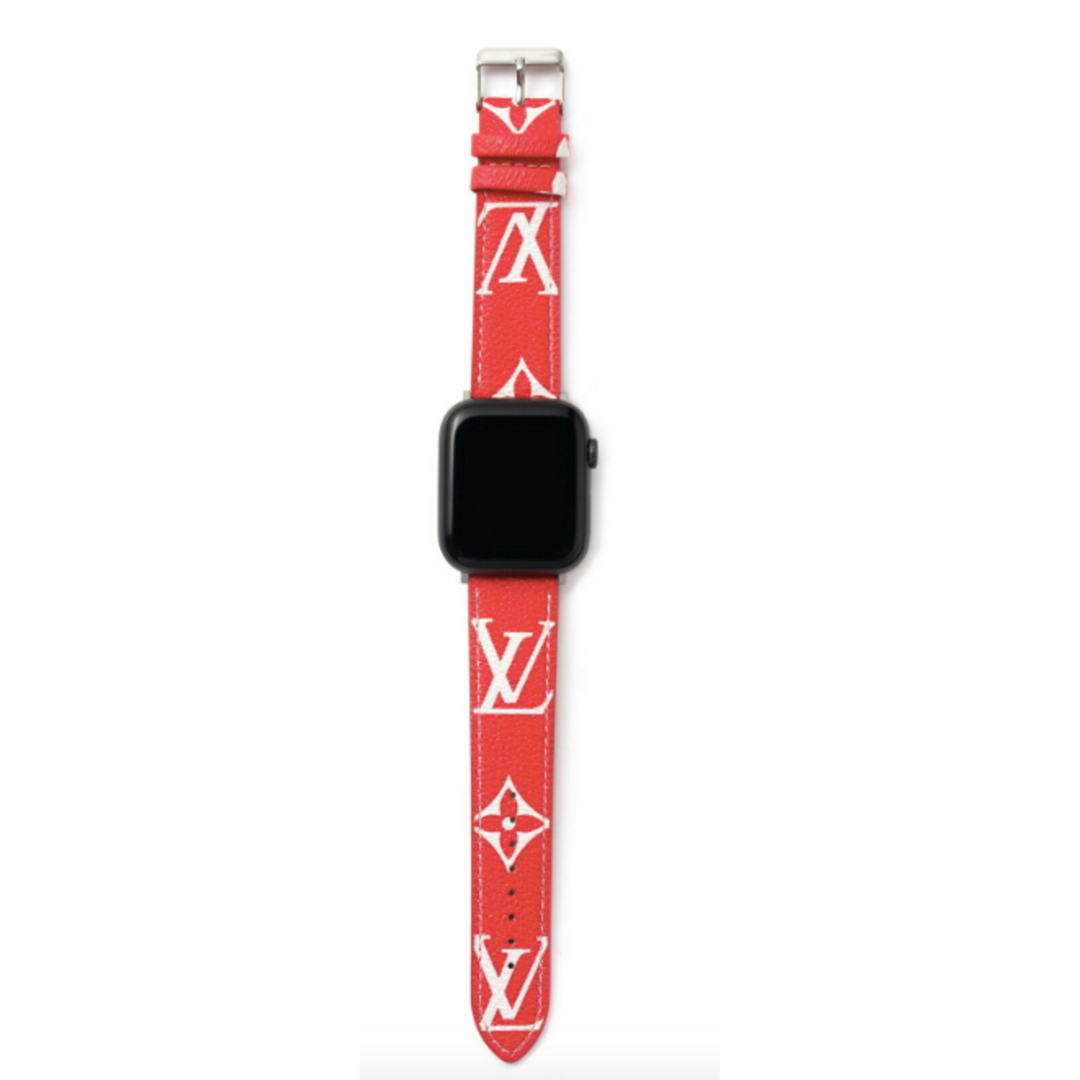The Apple Watch Series 7 offers the best combination of style, message handling, activity tracking, app selection, and battery life of any smartwatch for any platform. It comes in two body sizes—41 mm and 45 mm—that offer more active screen area than on previous Apple Watches in similarly sized bodies. It's a little faster at running apps than the Apple Watch SE, and noticeably faster than the still-available Apple Watch Series 3.
And it includes more premium features than previous models, such as an always-on display, blood oxygen measurement, ECG, more crack-resistant glass, and faster charging. It's also available in more expensive steel and titanium casings. Of all the smartwatches we've tested—for both iPhone and Android—the Apple Watch Series 7 represents the best overall package. It does all the Apple Watch-y things most people probably want just as well as, or better than, any other Apple Watch, including fitness tracking, messaging, and apps.
It also has the most complete suite of health tracking tools, including blood oxygen monitoring and ECG, as well as faster charging and more crack-resistant glass. The Apple Watch Series 7 is a great first smartwatch, and it's a solid upgrade if you have an Apple Watch Series 3 or older. If you own a Series 4, 5, or 6 that's still working well though, the Series 7 features won't feel like much of an upgrade. The Apple Watch Series 7 is the first model to come in 41 mm and 45 mm sizes, a 1 mm height increase, respectively, over the small and large versions of the previous few generations.
Combined, these elements make for a larger screen that offers an appreciable difference. We especially like that the bigger on-screen buttons are easier to tap. The display also follows the glass's curved edges, but this is mainly noticeable on certain watch faces. Although the 40mm and 44mm support dozens of band designs, both models offer three exclusive band options. You can choose between standard solo loops, braided solo loops, sport bands, sport loops, stainless steel, and leather bands.
You can check them out and design your own watch in the Apple Watch Studio. Buying an Apple Watch is not like buying a phone, it's more like buying a pair of shoes. Choosing the larger size just to have a bigger screen may mean wearing something that turns out to be uncomfortable. Your Apple Watch is something you will be wearing all day so comfort is paramount. If you have a wrist circumference which is 15cm or less then you will almost certainly want to go with the 40mm. If you have a wrist size between 15cm and 16.5cm then you are probably in the goldilocks zone where you could comfortably choose either.
If your wrist size is 16.5cm or above, then going with the larger 44mm version should still be comfortable but give you a larger screen display area. The Watch SE, which shares design elements with the Series 6, along with key health and safety features like fall detection, starts at $279 for the GPS-only model or $329 for the GPS and cellular version. It lacks an always-on display, as well as blood oxygen saturation and electrocardiogram readings—we go into detail on the differences between the two watches here. So, your wrist size sits in the goldilocks zone and you still can't decide.
Battery Life is super important to most people and the 44mm Apple Watch has a 20% bigger battery than the 40mm model. The 44mm also has 29% more pixels to power which offsets the larger battery. Apple reports both sized watches as having 'up to 18 hours' of battery life and does not specify longer battery life for either model. See here for further information on the battery testing Apple carried out. Shopping for solo loop bands is just a little more complicated, but nothing new there.
In case you didn't know, they're compatible only with Apple Watch SE, the Series 4, and newer models. For 40mm and 41mm-sized Apple Watch models, you can get solo loop bands in the size range of one through nine, whereas the 44mm and 45mm models work with band sizes four through 12. If that sizing reads like gibberish to you, the solo loop requires you to take a measurement of your wrist size to find the size that lines up with Apple's sizing guidelines. These watch bands look stylish and classy for the larger wrists. However, this Apple Watch band might feel too big for smaller wrists due to the difference in sizes. According to your personal choice, the perfect fit Apple Watch can prove to be your unique style statement.
For the 4th, 5th, 6th, and SE series watches, the 40mm Apple Watch band is the standard size. This case also fits perfectly for wrist sizes ranging from 130mm to 200mm. You just need to follow the measuring size guide mentioned on the company site or the store. For the company site, you need to pick the 40mm size option at checkout. Whereas the Apple Watch SE is available only in an aluminum body with three colors, the Series 7 offers many more—and more expensive—options.
The aluminum Series 7 is available in blue, midnight , starlight (a bronzy-silver), and green, and Product Red version. Notably absent is a plain silver, something that's been present in the lineup since the Watch was first introduced. For a $300 premium, you can choose a stainless steel case in graphite, silver, or gold. And for another $100 more than that, you can have titanium or black titanium. None of these variations function any differently; it's just aesthetics and screen material . The Apple Watch Series 3 features a slightly bigger display than the 40mm Apple Watch, although this is primarily owing to the larger display.
It lacks an always-on display and some of the Series 6's more advanced health features, however, including the ability to take an ECG and measure the oxygen saturation of your blood. It's a strong alternative to the Series 6 if you don't mind a less health-focused experience. It easily outperforms Google Wear OS-based watches like the Moto 360, and offers a much more fully realized smartwatch experience than Fitbit's more health-centric models. If you already own a Series 5, the Series 6 is really only worth the upgrade if you absolutely must have the always-on altimeter or SpO2 readings.
Apple is late to the game with sleep tracking capabilities, as most smartwatches and fitness trackers already offer this feature, and Apple's version is still pretty basic. After you wear the Apple Watch to bed, the Health app on your iPhone shows when you fell asleep, woke up, and your total time in bed and asleep for the night. It also shows a graph of your heart rate, with your maximum and minimum recorded beats per minute. It charts your sleep for the week and month, and shows your average time in bed and average time asleep. The Apple Watch has been our longstanding Editors' Choice for its excellent performance, unparalleled app selection, and ample health and fitness tracking features.
Charging a watch every night isn't much of a hassle at home, where you're likely charging your phone, too. We have some recommendations for great charging accessories, including three-in-one wireless charging stations for your Apple Watch, iPhone, and AirPods. The Apple Watch Series 7 offers all-day battery life and faster charging than previous models. We've found that we can use the Apple Watch Series 7 just as we have previous generations, with plenty of power remaining at the end of the day. In one test, the battery was at 30% after about 13 hours of wear, including an hour of activity tracking and audio streaming over LTE. Once you know your wrist size, it's time to pick the right fit for your wrist.
Longvadon offers an easy Apple Watch band sizing guide on every product page. Always double-check your measurements before going to the next step. This 42mm watch band is the bigger variant of the 1st, 2nd and 3rd generation watches. You need to choose the 42mm/44mm option at the checkout process for this watch band.
The 42mm watch band is ideal for wrist sizes from 140mm to 220mm. At first glance, the 40mm and 44mm are identical, with one just being a slightly larger version of the other. But, do these size differences affect performance, display resolution, battery life, and other key features that make a good smartwatch? Read this Apple Watch 40 vs 44 comparison article to find out the differences and similarities of these two models, and see which one is better for you. If you have a lot of bands, don't worry, all existing watch bands will still fit. The 38mm bands fit the new 40mm size, and the older 42mm bands fit the 44mm.
To go with the larger display, Apple has re-worked many of the UI elements, including updating existing watch faces and including new ones. Apple's clever band-attachment design is the most frustration-free of any smartwatch we've tested; swapping bands is an easy and quick task. Apple offers a slew of band options , and you can find hundreds of bands for any budget from third-party vendors. For many people, the biggest upside to the Apple Watch Series 7 over our budget pick is its always-on display.
In particular, instead of updating 60 times a second , as it does when you're looking at it, most of the time the screen can update just once per second . This design allows you to glance down and see the time and your complications whenever you'd like, without draining the battery so quickly. It's a feature we had been asking for since the original Apple Watch debuted, and it's well executed. Compared with the Series 6, the Series 7 is brighter in its passive mode indoors. 40mm Apple Watch44mm Apple WatchSize40mm Apple Watch has a screen size slightly bigger than the 38mm Apple Watch version of series 3.
This model also comes with more variety of official bands.Display Unlike traditional watches, Apple measures watch case size vertically in series 4,5,6 and SE. Women and men generally have wrists of different sizes and may prefer bigger or smaller straps. With Longavdon's XS, M, and XL bands, you can choose something that's not too loose nor too tight. But if the band is too big, the watch can spin around your wrist and even fall off.
The tech in your smart gadget needs to be in steady touch with the skin for you to use the electro diagram, blood oxygen meter, and other apps. The Series 7 features a blood oxygen sensor and an EKG function designed to detect unusual heart rhythms. The model ships with a new cable that allows for faster charging, which can be useful when using the Watch's sleep-tracking function. Not only does it affect comfort levels but it also impacts the availability of suitable replacement Apple Watch bands.
While not impossible, it's certainly difficult to find both large bands for the 40mm and small bands for the 44mm. For example, if you have a 20cm wrist circumference and you purchase the 40mm Apple Watch, the number of Apple Watch bands you could find that fit both your wrist and your watch would be very small. Similarly, if you have a 13cm wrist circumference and choose the 44mm Apple Watch then you would be in a similar predicament. The first, second, and third-generation Apple Watches come in several standard sizes for the cases. For choosing the 38mm Apple Watch band, you need to press on the 38/40 option. This case fits perfectly for wrist sizes ranging from 130mm to 200 mm.
As expected, Apple updated its online inventory of Watch bands accordingly for the new sizes. But many of them no longer list options for the 38, 40, 42, and 44mm sizing options for all of the bands. While it might appear at first that Apple has unceremoniously eradicated support for all previous models, don't worry, it didn't do that. However, the company did make it slightly more confusing to quickly find the accessory made for your watch size. If your wrist circumference is 7.5 to 8 inches, you should be looking at 44mm to 46mm watch cases.
These recommendations are based off of the modern trend of larger timepieces. Knowing your wrist size is also important when ordering your watch so you can make sure the strap fits and the bracelet is sized properly. We like the larger size for its bigger screen and improved battery life alone, but either version will give you the latest Watch features you're looking for. This isn't such a novel feature, as several other fitness trackers and smartwatches can measure your SpO2 level, including the Garmin Vivoactive 4, Samsung Galaxy Watch3, and Fitbit Sense. The Fitbit Sense, however, only measures your blood oxygen saturation level automatically when you wear it to bed, and you need a specific clock face enabled for it to work. If you're considering an Apple Watch for a kid or for a family member without an iPhone, there's a new feature called Family Setup.
It's limited to Series 4 and newer Apple Watch models , and they have to be the cellular versions—which means you need to spend at least $330 on that Apple Watch. For most people, Family Setup makes sense only with a hand-me-down. But if you do use it, you can limit apps and contacts, set a Schooltime mode for limited distractions, and check in on the wearer's whereabouts. Whether you're getting your first Apple Watch or upgrading from a version that's a few years old, the Apple Watch Series 7 is the model most people should choose. It has a bright large screen and is plenty fast for apps, and it includes some health-related features that less expensive models don't. If you are a long time traveler, choose 44mm because the larger size of the battery it has a long battery life.
Both are using S4 processor chip which makes the watch to process faster compared to the previous version. If you want the largest display size available in Apple Watch with greater battery life and you have your heart set on a leather loop band, then the 44mm Apple Watch is the right choice. A smartwatch is intended for daily use and can display time as well as provide a range of different features. A smartwatch can display notifications, support different apps, and manage media playback. A smartwatch can also become a fitness tracker, offer GPS tracking, and answer messages by voice. On the other hand, choosing the kind of strap or band and the material used should be based on your preferences.
Metal bracelets may come in a mesh or a link form and are mostly preferred by men with larger wrists. At the same time, metal bands are still popular for women's watches although most prefer the leather straps. Fabric or nylon straps are commonly used for sports watches though these kinds of straps can also be seen on casual watches.
The 44mm Apple Watch band is the largest watch band of the Apple company. This is a standard size that is available for the 4th, 5th, 6th, and SE Apple Watch models. This watch band is the perfect fit for wrist sizes ranging from 140mm to 220mm. If the size of your wrist is around the 14cm range, we would suggest you go for Apple Watch bands of the small size.
That size will make your wrist look stylish, and you will feel comfortable wearing it. All the Apple watch bands come in XS sizes for the perfect fit on your wrist. Before the next step, you must double-check your wrist measurements to be sure. When it comes to Apple Watch leather bands, choosing the right size is quite easy. Apple watches come with genuine leather bands, which are rather adjustable and are a great fit on wrists of variable sizes. If you're preparing to buy an Apple Watch, you need to take into consideration wrist size and the available band options to get the best fit.
There are a few Apple Watch bands that need specific sizing, and others that are not designed to fit all wrists. This is the second time Apple has pulled a smartwatch size change. The Apple Watch 4 increased to 40mm and 44mm versions from the Apple Watch 3's 38mm and 42mm options.
Now, the Apple Watch 7 is positioned to become the best Apple Watch yet for users craving larger wrist candy. The "44mm" in this size directly refers to the vertical length of the display. If you're looking for a larger display size, this is the Watch to choose. Display size is a factor that may be important to many users, as the Apple Watch is a touchscreen designed to enable a variety of touch controls, not to mention reading texts and alerts on the display. Aside from the casing and display size differences, the two have the same hardware and software characteristics. Both were made to accommodate a certain wrist size—the 40mm for smaller wrists and the 44mm for bigger wrists.
However, this does not imply that pick one over the other only on the basis of that criteria. The 44mm is undoubtedly simpler to operate and read thanks to its bigger screen. The Series 6 has all the excellent health, safety, and lifestyle features of its predecessor. The watch's Move, Exercise, and Stand rings are a personal favorite, as they help motivate me to stay active on a regular basis and cheer me on when I do.




























No comments:
Post a Comment
Note: Only a member of this blog may post a comment.